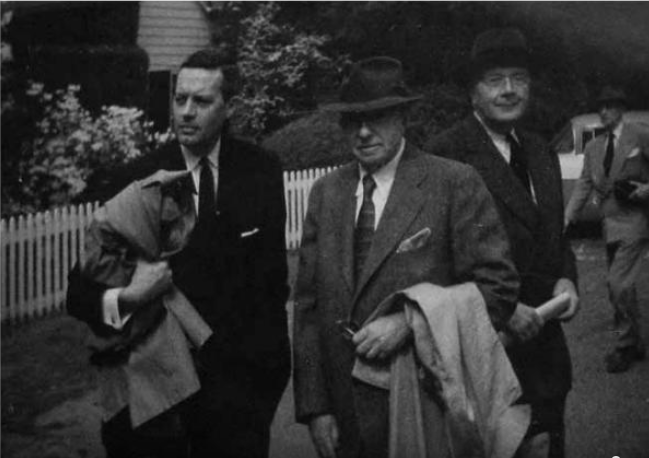

Queer Places:
Harvard University (Ivy League), 2 Kirkland St, Cambridge, MA 02138
Woodlands, 16 Blythewood Rd, Baltimore, MD 21210
Land of Promise, Quaker Bottom Rd, Havre De Grace, MD 21078
 John Gilman D’Arcy Paul (January 31, 1887 - January 12, 1972) was a
diplomat, editor and patron of the arts. He was a member of the
Horace Walpole
Society, elected in 1945, honorary member in 1969. Well known as an authority
on Maryland history and architecture, Paul strongly advocated architectural
preservation of downtown Baltimore, especially the Mt. Vernon neighborhood.
John Gilman D’Arcy Paul (January 31, 1887 - January 12, 1972) was a
diplomat, editor and patron of the arts. He was a member of the
Horace Walpole
Society, elected in 1945, honorary member in 1969. Well known as an authority
on Maryland history and architecture, Paul strongly advocated architectural
preservation of downtown Baltimore, especially the Mt. Vernon neighborhood.
John Gilman D’Arcy Paul was born on January 31, 1887 to D’Arcy and Charlotte Abbott Gilman Paul. Charlotte Paul was the daughter of John Stratton Gilman, a financial leader of Baltimore in the 19th century and partner in the Abbott Iron Works in Canton. The Gilman family estate, where Paul grew up, was called Woodlands, located on Gorsuch Ave., Waverly, where City College was later built. An adjoining property, extending east to Harford Rd., was Abbottston, the home of Horace Abbott (1806-1887), founder of the Abbott Iron Works. Paul was raised and educated in Baltimore, Maryland. Paul was graduated from Harvard in 1908 magna cum laude, having majored in Russian and having won the Bowdoin Prize. He taught for a time at the university, from which he received an M.A degree in 1914.
Before completing his graduate studies, Paul had served in Buenos Aires as private secretary to John W. Garrett, United States Ambassador to Argentina. At the outbreak of World War I he became a special attaché in the United States Embassy in Paris.
Paul was assistant editor of The Atlantic Monthly under Ellery Sedgwick in Boston in 1916–17. He returned to Europe in 1917 as special assistant in the United States Legation at The Hague and was a member of the United States delegation to the Peace Conference in Paris.
In the early 1920s, Gilman Paul resided with his mother at the Woodlands house on Gorsuch Ave. Beginning ca. 1925, they lived in a home with elaborate gardens at 16 Blythewood Rd. in north Baltimore (this latter residence seems also to have been called "Woodlands").
Paul owned and operated a farm near Havre de Grace (Harford Co.) called Land of Promise, near the outlet of Deer Creek into the Susquehanna River. A nearby property was Rock Run Mill, owned by Henry Archer at the end of the 19th century, a photographer. This area later became part of Susquehanna State Park, the establishment of which was accomplished partly through Mr. Paul's influence. Also living in the area was Samuel Mason, Jr. (1888-1957, b. Philadelphia) who resided on Little Pines Farm in Darlington. Gilman Paul shared his interest in Maryland history with J. Alexis Shriver (1872-1951) and William B. Marye (1886-1979).
Paul was passionate about historic preservation and led efforts to restore “Hampton,” the Ridgely family’s Towson estate.
Paul was formerly president of the Baltimore Museum of Art, a trustee of Johns Hopkins University, the Peabody Institute and Peale Museum in Baltimore and vice president of the Maryland Historical Society.
He died on January 12, 1972, at his home in Guilford. He would have been 85 years old Jan. 31.
My published books: